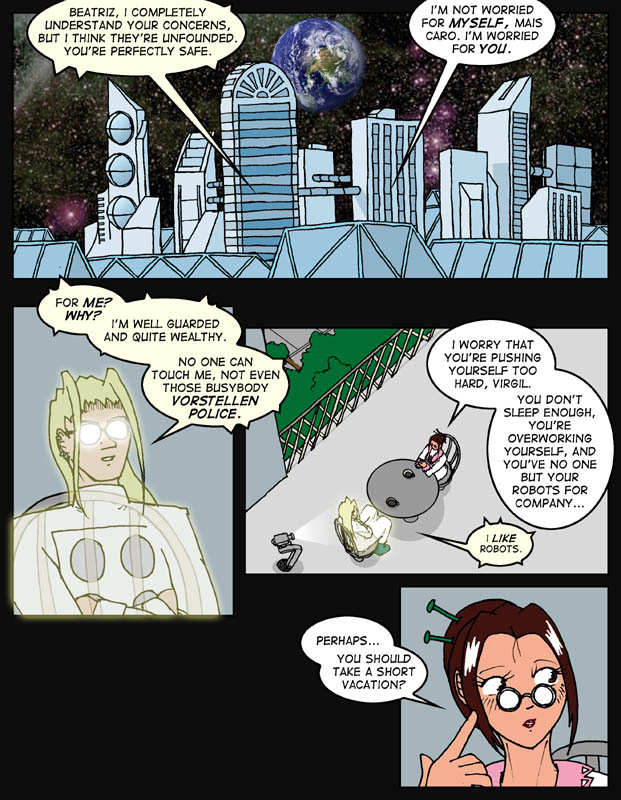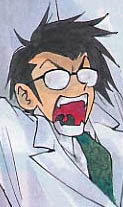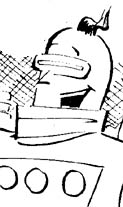
| ||
|
(Jon sez:)  The city of Gagarin probably looks a little strange in that first panel.
For one thing, it doesn't have a dome like every other city on the Moon in
science fiction - like, for instance, the city of Noviy Anadyr in the
repressive Lunar Republic, last seen back in Chapter One. While it
might seem that such a dome would be necessary for a lunar city, it's not
actually required. The buildings themselves can be sealed and pressurized,
with covered arcades and plazas between them.
The city of Gagarin probably looks a little strange in that first panel.
For one thing, it doesn't have a dome like every other city on the Moon in
science fiction - like, for instance, the city of Noviy Anadyr in the
repressive Lunar Republic, last seen back in Chapter One. While it
might seem that such a dome would be necessary for a lunar city, it's not
actually required. The buildings themselves can be sealed and pressurized,
with covered arcades and plazas between them.
We're all conditioned by the movies to believe that any hole in a building in vacuum will lead to the structure losing air like a popping balloon, but that's not quite how things would happen in real life. The speed with which an enclosed space loses air into vacuum depends on the size of the hole and the difference in pressure between the pressurized volume (the room) and the unpressurized volume (the lunar surface). A reasonably-sized hole, such as one caused by a micrometeorite striking a window, wouldn't evacuate a room before the occupants could flee to an undamaged part of the building. Of course, a properly designed building would rarely be punctured. Windows would be made of thick transparent material designed to slow and/or stop impacting objects. Walls would be armored. Shutters would close over damaged windows or walls, closing off punctures in the outer skin of the building before too much air pressure could be lost. There's a lot of this sort of background info in the comic. Aren't you glad none of it makes its way into the actual storyline? |
(Mark sez:)  Far from it, I'm upset that none of the background material enters the actual storyline! I think stories should stop dead every five pages so the author can elbow his way onstage and lecture about irrelevant topics! Also, I think that David Weber is a great writer!
Far from it, I'm upset that none of the background material enters the actual storyline! I think stories should stop dead every five pages so the author can elbow his way onstage and lecture about irrelevant topics! Also, I think that David Weber is a great writer!
... Oh, I'm going to catch heck for that one. Anyway, I thought it might be a good idea to do a quick recap since we're cutting back to this previous scene. Basically, while Caprice and Benjamin were ducking flying spaceship parts and chatting about the secret history of mankind, their opposite numbers the mad scientists Drs. Haas and Juruna were having a nice cup of coffee on the Moon, hampered only slightly by Haas only being present as a hologram. We now rejoin that scene. Let's watch. |
|